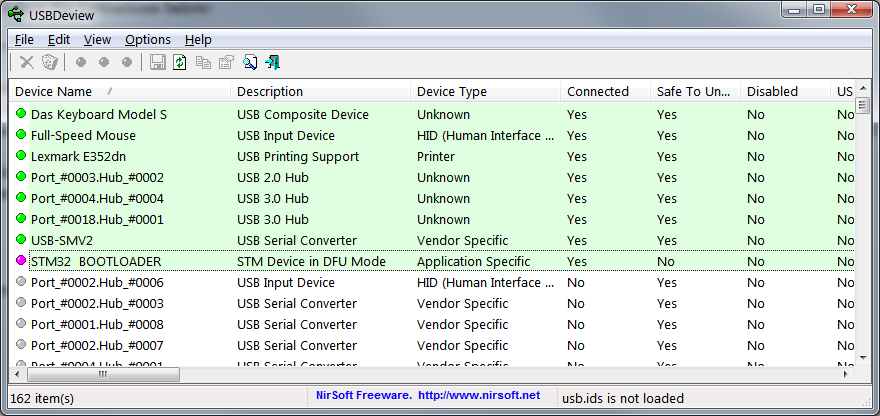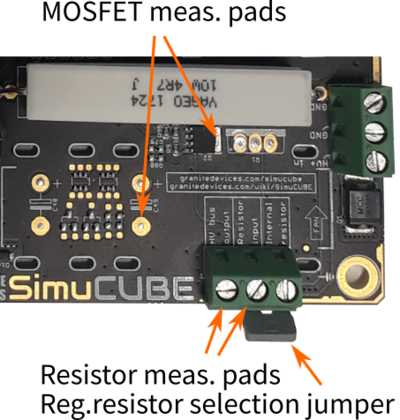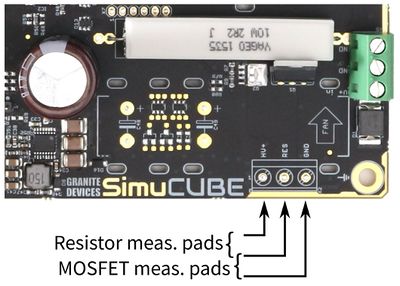Difference between revisions of "SimuCUBE troubleshooting"
| [checked revision] | [checked revision] |
(→Over voltage fault) |
(→Over voltage fault) |
||
| Line 1: | Line 1: | ||
{{SimucubeManualNav}}This page lists common pitfalls and solutions regarding SimuCUBE. Please also refer to common firmware-related troubleshooting steps described in [[SimuCUBE Firmware User Guide]]. | {{SimucubeManualNav}}This page lists common pitfalls and solutions regarding SimuCUBE. Please also refer to common firmware-related troubleshooting steps described in [[SimuCUBE Firmware User Guide]]. | ||
| − | + | == Over voltage fault == | |
Even with features to reduce the risk, there is a chance that the regenerative resistor circuitry get's damaged. To prevent this, use the latest firmware, and double check your FOV (over voltage fault) setting in Granity. | Even with features to reduce the risk, there is a chance that the regenerative resistor circuitry get's damaged. To prevent this, use the latest firmware, and double check your FOV (over voltage fault) setting in Granity. | ||
| − | |||
| − | |||
To check if the regenerative circuitry is damaged, a multimeter (resistance meter) is needed. | To check if the regenerative circuitry is damaged, a multimeter (resistance meter) is needed. | ||
| + | Please note, that some multimeters do not compensate for the test wire resistance, and this might lead to higher value when measuring the resistor. | ||
| + | |||
| + | === SimuCUBE 1r005 === | ||
| + | |||
| + | # Measure the resistance from the X2 pad HV bus output to Resistor input. The measured resistance should be close to 2.2 Ohm in single resistor SimuCUBE boards, and close to 2.35 Ohm in boards where two resistors are soldered. | ||
| + | # Measure the resistance from the surface mounted transistor tab to GND. Please refer to the image for test points. The measured resistance should stabilize close to 6 kOhms. | ||
| + | #* Measuring with automatic range, the MOSFET resistance measures as described in 1r004 section. | ||
| + | #* Measuring with 20 kOhm range, the MOSFET resistance rises slowly from < 1 kOhm to 6 kOhm. | ||
| + | |||
| + | |||
| + | [[File:Simucube 1r005 reg.resistor circuit measurement.png|none|thumb|SimuCUBE 1r005 regenerative resistor circuit measurement pads.]] | ||
| + | |||
| + | === SimuCUBE 1r004 === | ||
# Measure the resistance from the X2 pad HV+ to RES. The measured resistance should be close to 2.2 Ohm in single resistor SimuCUBE boards, and close to 2.35 Ohm in boards where two resistors are soldered. | # Measure the resistance from the X2 pad HV+ to RES. The measured resistance should be close to 2.2 Ohm in single resistor SimuCUBE boards, and close to 2.35 Ohm in boards where two resistors are soldered. | ||
# Measure the resistance from the X2 pad RES to GND. The measured resistance should be around 12..15 kOhm, changing (lowering) slowly. | # Measure the resistance from the X2 pad RES to GND. The measured resistance should be around 12..15 kOhm, changing (lowering) slowly. | ||
| − | |||
| − | |||
Should the resistor measure more than 5 Ohm, and/or the MOSFET measures less than 10 kOhm, then double check your measurement, and if the results persist, then the respective component need to be changed. | Should the resistor measure more than 5 Ohm, and/or the MOSFET measures less than 10 kOhm, then double check your measurement, and if the results persist, then the respective component need to be changed. | ||
Revision as of 10:59, 16 March 2018
This page lists common pitfalls and solutions regarding SimuCUBE. Please also refer to common firmware-related troubleshooting steps described in SimuCUBE Firmware User Guide.Over voltage fault
Even with features to reduce the risk, there is a chance that the regenerative resistor circuitry get's damaged. To prevent this, use the latest firmware, and double check your FOV (over voltage fault) setting in Granity.
To check if the regenerative circuitry is damaged, a multimeter (resistance meter) is needed. Please note, that some multimeters do not compensate for the test wire resistance, and this might lead to higher value when measuring the resistor.
SimuCUBE 1r005
- Measure the resistance from the X2 pad HV bus output to Resistor input. The measured resistance should be close to 2.2 Ohm in single resistor SimuCUBE boards, and close to 2.35 Ohm in boards where two resistors are soldered.
- Measure the resistance from the surface mounted transistor tab to GND. Please refer to the image for test points. The measured resistance should stabilize close to 6 kOhms.
- Measuring with automatic range, the MOSFET resistance measures as described in 1r004 section.
- Measuring with 20 kOhm range, the MOSFET resistance rises slowly from < 1 kOhm to 6 kOhm.
SimuCUBE 1r004
- Measure the resistance from the X2 pad HV+ to RES. The measured resistance should be close to 2.2 Ohm in single resistor SimuCUBE boards, and close to 2.35 Ohm in boards where two resistors are soldered.
- Measure the resistance from the X2 pad RES to GND. The measured resistance should be around 12..15 kOhm, changing (lowering) slowly.
Should the resistor measure more than 5 Ohm, and/or the MOSFET measures less than 10 kOhm, then double check your measurement, and if the results persist, then the respective component need to be changed.
SimuCUBE won't go into DFU mode
- If device does not appear as DFU mode device when plugged in, check Windows Device Manager if there is any unknown USB devices. If yes, then try unplugging SimuCUBE USB cable and see if that device disappears. If this is the case, then it indicates that device driver is not installed properly. Try installing ST DfuSeDemo software with drivers to solve the issue. DfuSeDemo Installation Directory will contain the required drivers.
- Maybe USB device is not recognized at all? Keep Device Manager open and plug/unplug SimuCUBE while keeping eye on the Device Manager list. If you see list refresh, then it is a sign that device has entered/left the list. If nothing happens, then it might indicate hardware issue as no USB device is recognized at all.
- Download & use USBDeview to see whether STM32 BOOTLOADER device or any device missing driver is listed:

SimuCUBE unexpectedly stuck in DFU mode
It is possible, but very rare, that SimuCUBE gets stuck in DFU mode or switches to DFU mode by itself without user interaction. Please refer to separate support article: SimuCUBE stuck in DFU mode

